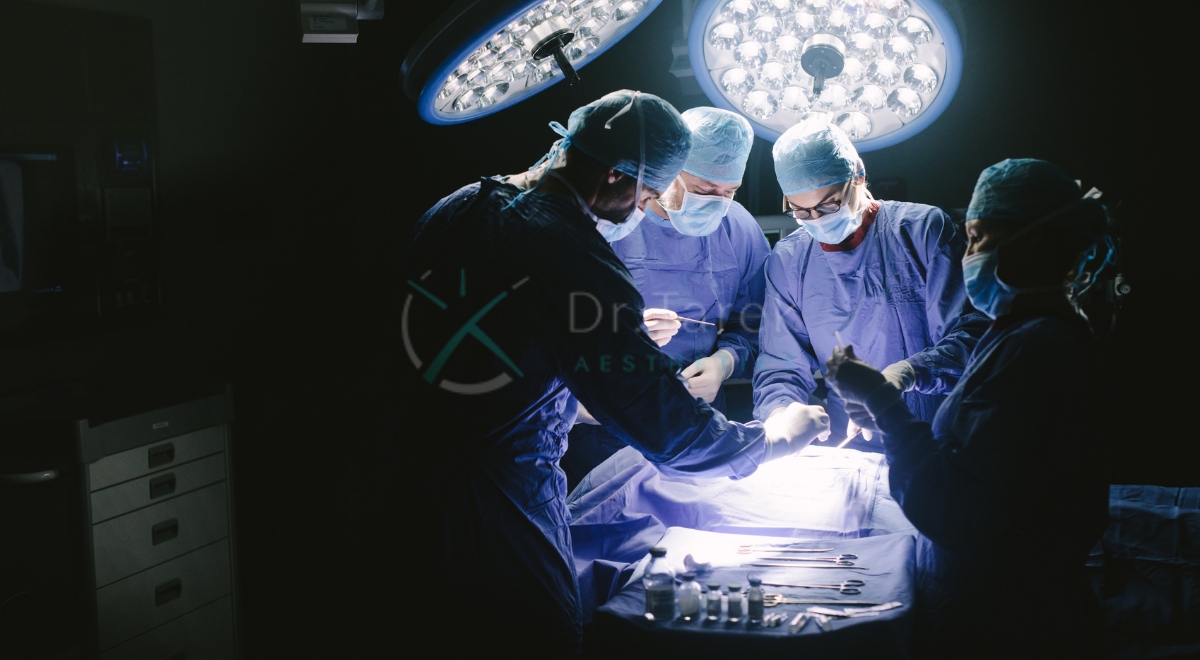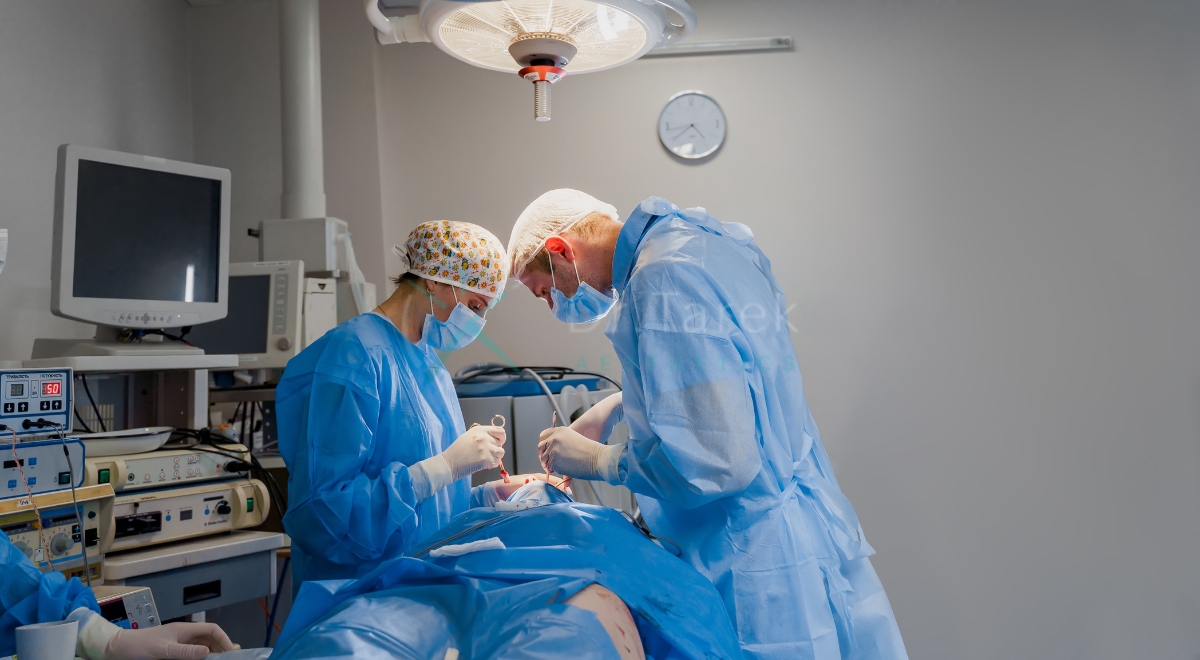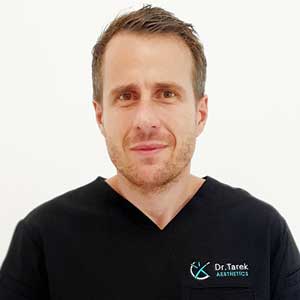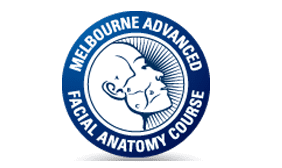When Did Plastic Surgery Start?
Plastic surgery, a field that has transformed countless lives, has a rich and fascinating history. From ancient civilizations to modern-day innovations, the journey of plastic surgery is a testament to human ingenuity and the desire for physical restoration and enhancement. Let’s explore the origins and evolution of this remarkable medical specialty.
When Did Plastic Surgery Start?
The roots of plastic surgery stretch back thousands of years, with early civilizations laying the groundwork for the sophisticated techniques we see today.
Nearby Aesthetic Specialists offer beauty treatments close to home
find skilled professionals for cosmetic procedures in your area with Nearby Aesthetic Specialists
Ancient Foundations
Early Practices in Ancient Egypt
The ancient Egyptians were pioneers in many medical fields, including plastic surgery. As early as 3000 BCE, Egyptian physicians were performing procedures that we would recognize as rudimentary forms of plastic surgery.
Book A Consultation With Dr Tarek Bayazid
Installment Plan Available
These early surgeons developed techniques to repair broken noses and ears, often using materials like linen and wood to create splints. Hieroglyphics and papyrus scrolls provide evidence of these procedures, showcasing the ingenuity of ancient Egyptian medicine.
- Key ancient Egyptian plastic surgery practices:
- Nasal reconstruction
- Ear repair
- Use of splints and bandages
- Documentation in medical papyri
Techniques in Ancient India
While Egypt was making strides, ancient India was also developing sophisticated surgical techniques. The Sushruta Samhita, a Sanskrit text from around 600 BCE, describes various plastic surgery procedures in remarkable detail.
Sushruta, often called the “Father of Surgery,” detailed methods for reconstructing noses, ears, and lips. His technique for nasal reconstruction, using a flap of skin from the forehead, is still used in modified forms today.
- Notable contributions from ancient India:
- Rhinoplasty (nose reconstruction)
- Skin grafting techniques
- Surgical instruments for precise procedures
- Detailed documentation of surgical methods
The Need of War
World War I and the Birth of Modern Plastic Surgery
The horrors of World War I catalyzed the development of modern plastic surgery. The unprecedented scale of facial injuries from trench warfare created an urgent need for innovative reconstructive techniques.
Surgeons like Harold Gillies pioneered new methods to repair devastating facial injuries, laying the foundation for many procedures still used today. This period marked the transition of plastic surgery from an occasional practice to a recognized medical specialty.
- Advancements during WWI:
- Tube pedicle technique for skin grafting
- Facial reconstruction methods
- Establishment of specialized hospital units
Contributions of Dr. Tarek
Dr. Tarek, a renowned plastic surgeon, has made significant contributions to the field. His innovative techniques and commitment to patient care have helped advance plastic surgery in the modern era. Dr. Tarek’s work builds on the foundations laid during World War I, further refining and improving surgical outcomes.
- Dr. Tarek’s notable contributions:
- Advanced facial reconstruction techniques
- Minimally invasive cosmetic procedures
- Research in tissue engineering
The Evolution of Plastic Surgery
As plastic surgery progressed from its ancient roots through the crucible of wartime necessity, it began to expand its scope and refine its techniques.
From Reconstruction to Aesthetic Enhancement
Early Reconstructive Techniques
The primary focus of early plastic surgery was reconstruction – repairing damage caused by injury, disease, or congenital defects. Surgeons developed techniques to restore form and function, often working with limited resources and knowledge.
These early reconstructive efforts laid the groundwork for more advanced procedures. Surgeons learned to manipulate tissue, manage blood supply, and minimize scarring – skills that would prove invaluable as the field expanded.
- Key early reconstructive procedures:
- Skin grafting for burn victims
- Cleft lip and palate repair
- Hand surgery for trauma and congenital defects
Transition to Cosmetic Procedures
As reconstructive techniques improved, surgeons began to explore the potential for aesthetic enhancement. The mid-20th century saw a gradual shift towards elective cosmetic procedures, driven by changing societal attitudes and improved surgical capabilities.
This transition marked a new era in plastic surgery, where patients sought not just restoration but enhancement of their natural features. Procedures like rhinoplasty and breast augmentation became increasingly popular, reflecting changing beauty standards and personal aspirations.
- Popular early cosmetic procedures:
- Rhinoplasty (nose reshaping)
- Breast augmentation and reduction
- Facelifts and eyelid surgery
Technological Breakthroughs 
Introduction of Skin Grafting
Skin grafting, a cornerstone of plastic surgery, has a long history dating back to ancient India. However, modern skin grafting techniques emerged in the late 19th and early 20th centuries.
Surgeons like Jacques Reverdin and John Staige Davis refined skin grafting methods, developing techniques for both full-thickness and split-thickness grafts. These advancements dramatically improved outcomes for burn victims and patients with large wounds.
- Types of skin grafts:
- Split-thickness grafts
- Full-thickness grafts
- Composite grafts
Advances in Microsurgery
The development of microsurgery in the 1960s and 1970s revolutionized plastic surgery. This technique, using specialized microscopes and precision instruments, allowed surgeons to work on tiny blood vessels and nerves.
Microsurgery opened up new possibilities in reconstructive surgery, enabling procedures like free tissue transfer and replantation of severed limbs. It also improved the outcomes of many cosmetic procedures by allowing for more precise and less invasive techniques.
- Applications of microsurgery in plastic surgery:
- Free flap reconstruction
- Digit and limb replantation
- Lymphatic surgery
- Nerve repair and grafting
Societal Acceptance and the Rise of Cosmetic Surgery
As plastic surgery techniques advanced, societal attitudes towards these procedures began to shift, leading to increased acceptance and popularity.
Entering the Mainstream
Popularity Surge in the 1960s
The 1960s marked a turning point for plastic surgery, particularly in the realm of cosmetic procedures. Changing social norms and increased media exposure contributed to a surge in popularity for aesthetic enhancements.
This decade saw procedures like breast augmentation and facelifts become more commonplace. The idea of “designer bodies” began to take hold, with plastic surgery seen as a means of achieving personal ideals of beauty.
- Factors contributing to the 1960s surge:
- Changing beauty standards
- Increased disposable income
- Advancements in surgical techniques
- Growing media influence
Influence of Media and Celebrities
The media, particularly Hollywood, played a significant role in popularizing plastic surgery. Celebrities openly discussing their procedures helped normalize the concept of cosmetic enhancement.
Television shows and magazines began featuring plastic surgery makeovers, further fueling public interest. This media exposure, while sometimes sensationalized, helped educate the public about the possibilities of plastic surgery.
- Media influences on plastic surgery:
- Celebrity endorsements and openness
- Reality TV shows featuring cosmetic procedures
- Magazine features on plastic surgery trends
- Social media and influencer culture
Education and Patient Experience 
Training and Certification of Plastic Surgeons
As plastic surgery gained popularity, the need for standardized training and certification became apparent. Professional organizations like the American Board of Plastic Surgery were established to ensure high standards of practice.
Rigorous training programs and board certification processes were developed to ensure surgeons had the necessary skills and knowledge. This focus on education and certification helped improve patient safety and outcomes.
- Key aspects of plastic surgeon training:
- Residency programs in plastic surgery
- Fellowship opportunities for subspecialization
- Continuing medical education requirements
- Board certification processes
Importance of Patient Safety and Care
With the rise of cosmetic surgery, there has been an increased emphasis on patient safety and comprehensive care. Ethical considerations, informed consent, and realistic expectations have become central to the practice of plastic surgery.
Surgeons like Dr. Tarek have championed patient-centered approaches, focusing not just on technical skill but also on understanding and addressing patients’ psychological and emotional needs.
- Elements of patient-centered plastic surgery:
- Thorough pre-operative consultations
- Realistic expectation setting
- Post-operative care and follow-up
- Psychological screening and support
Sub-Specialties in Plastic Surgery
As the field of plastic surgery expanded, various sub-specialties emerged, each focusing on specific areas of the body or types of procedures.
Aesthetic Surgery
Common Procedures and Trends
Aesthetic or cosmetic surgery focuses on enhancing appearance. Over the years, certain procedures have become particularly popular, reflecting changing beauty ideals and technological advancements.
From facial rejuvenation to body contouring, aesthetic surgery offers a wide range of options for those seeking to alter their appearance. Trends in this field often reflect broader societal shifts and cultural influences.
- Popular aesthetic procedures:
- Breast augmentation and lift
- Liposuction and body contouring
- Facial procedures (facelifts, rhinoplasty)
- Non-surgical treatments (Botox, fillers)
Innovations in Minimally Invasive Techniques
The trend towards less invasive procedures has been a significant development in aesthetic surgery. Techniques that offer shorter recovery times and reduced scarring have gained popularity among patients seeking subtle enhancements.
Innovations like endoscopic surgery and laser treatments have expanded the options available to patients, allowing for more precise and less traumatic interventions.
- Minimally invasive aesthetic techniques:
- Endoscopic facelifts
- Non-surgical fat reduction (CoolSculpting, Kybella)
- Laser skin resurfacing
- Thread lifts
Reconstructive Surgery
Techniques for Burn Victims
Reconstructive surgery for burn victims has seen remarkable advancements since its early days. Modern techniques focus not just on wound closure but on restoring function and appearance.
Surgeons use a combination of skin grafts, tissue expansion, and flap procedures to address the complex needs of burn patients. The goal is to improve both the physical and psychological outcomes for these individuals.
- Advanced burn reconstruction techniques:
- Cultured epithelial autografts
- Dermal substitutes
- Microsurgical free flaps
- Tissue expansion
Craniofacial Surgery for Congenital Defects
Craniofacial surgery addresses congenital and acquired deformities of the skull and face. This subspecialty has made tremendous strides in treating conditions like cleft lip and palate, craniosynostosis, and facial asymmetries.
Surgeons in this field often work in multidisciplinary teams, combining surgical skill with advanced imaging and 3D modeling technologies to plan and execute complex reconstructions.
- Key areas of craniofacial surgery:
- Cleft lip and palate repair
- Craniosynostosis correction
- Facial reconstruction after trauma
- Treatment of rare craniofacial syndromes
Complications, Risks, and Reversals
While plastic surgery has advanced significantly, it’s important to acknowledge the potential risks and complications associated with these procedures.
Psychological Disorders
Body Dysmorphic Disorder
Body Dysmorphic Disorder (BDD) is a mental health condition that can significantly impact patients seeking plastic surgery. Individuals with BDD have an obsessive focus on perceived flaws in their appearance, often leading to repeated cosmetic procedures.
Plastic surgeons play a crucial role in identifying potential BDD cases and referring patients for appropriate mental health care. Ethical considerations in patient selection have become an important aspect of modern plastic surgery practice.
- Signs of BDD in plastic surgery patients:
- Excessive concern over minor or imagined flaws
- Repeated requests for multiple procedures
- Unrealistic expectations of surgical outcomes
- Social isolation due to appearance concerns
Mental Health Considerations
The psychological impact of plastic surgery extends beyond BDD. Surgeons must consider the mental health of all patients, ensuring they are emotionally prepared for the changes that surgery can bring.
Pre-operative psychological screening has become more common, helping to identify patients who may benefit from counseling before or after their procedures. This holistic approach to patient care reflects the evolving nature of plastic surgery practice.
- Mental health aspects in plastic surgery:
- Pre-operative psychological evaluations
- Post-operative support and counseling
- Managing patient expectations
- Addressing body image issues
Minimally Invasive Cosmetic Medicine
Non-Surgical Options
The field of plastic surgery has expanded to include a wide range of non-surgical cosmetic treatments. These procedures offer alternatives for patients seeking enhancement without the risks and recovery time associated with surgery.
From injectables to laser treatments, these options have broadened the scope of plastic surgery practices and made aesthetic enhancements more accessible to a wider range of patients.
- Popular non-surgical cosmetic treatments:
- Botulinum toxin injections (Botox)
- Dermal fillers
- Chemical peels
- Laser hair removal
Benefits and Limitations
While non-surgical options offer many benefits, including reduced downtime and lower costs, they also have limitations. Understanding the capabilities and constraints of these treatments is crucial for both practitioners and patients.
Surgeons like Dr. Tarek emphasize the importance of tailoring treatment plans to individual patient needs, often combining surgical and non-surgical approaches for optimal results.
- Comparison of surgical vs. non-surgical options:
|
Aspect |
Surgical Procedures |
Non-Surgical Treatments |
|
Results |
Often more dramatic and long-lasting |
Generally subtle and temporary |
|
Recovery Time |
Longer, may require weeks |
Minimal, often same-day return to activities |
|
Risks |
Higher risk of complications |
Lower risk, but not risk-free |
|
Cost |
Generally higher upfront cost |
Lower initial cost, may require repeated treatments |
|
Customization |
Highly customizable |
Limited customization options |
FAQs
When did plastic surgery start and who were the pioneers?
Plastic surgery has ancient roots dating back to 3000 BCE in Egypt and 600 BCE in India. The Indian physician Sushruta, often called the “Father of Surgery,” was a key pioneer, describing rhinoplasty and other procedures in his text, the Sushruta Samhita. Modern plastic surgery, however, truly began to take shape during World War I, with surgeons like Harold Gillies developing innovative techniques to treat facial injuries.
How did World War I influence the development of plastic surgery?
World War I had a profound impact on the development of plastic surgery. The unprecedented number of soldiers with severe facial injuries necessitated rapid advancements in reconstructive techniques. Surgeons like Harold Gillies established specialized units for facial reconstruction, pioneering methods such as the tube pedicle technique for skin grafting. These wartime innovations laid the foundation for many modern plastic surgery procedures and established plastic surgery as a distinct medical specialty.
What are the major technological breakthroughs in plastic surgery?
Plastic surgery has seen numerous technological breakthroughs over the years. The introduction of modern anesthesia in the 19th century made complex procedures possible. The development of microsurgery in the 1960s revolutionized reconstructive techniques, allowing for intricate procedures like free tissue transfer. More recently, 3D imaging and printing technologies have enhanced surgical planning and custom implant creation. Additionally, advancements in tissue engineering and stem cell research are opening new frontiers in regenerative plastic surgery.
How has societal acceptance of plastic surgery evolved over time?
Societal acceptance of plastic surgery has undergone a significant transformation. Initially focused on reconstruction after injury or illness, plastic surgery was viewed primarily as a medical necessity. The mid-20th century saw a shift towards cosmetic procedures, initially met with some skepticism. However, increased media exposure, celebrity endorsements, and improved safety and results have led to greater acceptance. Today, plastic surgery is widely recognized as a legitimate means of personal enhancement, though debates about beauty standards and the ethics of cosmetic procedures continue.
What are the most common complications and risks associated with plastic surgery?
While plastic surgery has become safer over time, it still carries risks. Common complications include infection, bleeding, and adverse reactions to anesthesia. Specific to cosmetic procedures, risks can include unsatisfactory aesthetic results, asymmetry, and changes in sensation. More serious complications, though rare, can include deep vein thrombosis, pulmonary embolism, and in extreme cases, organ damage. It’s crucial for patients to understand these risks and for surgeons to carefully screen candidates and follow best practices to minimize complications.











Related Posts